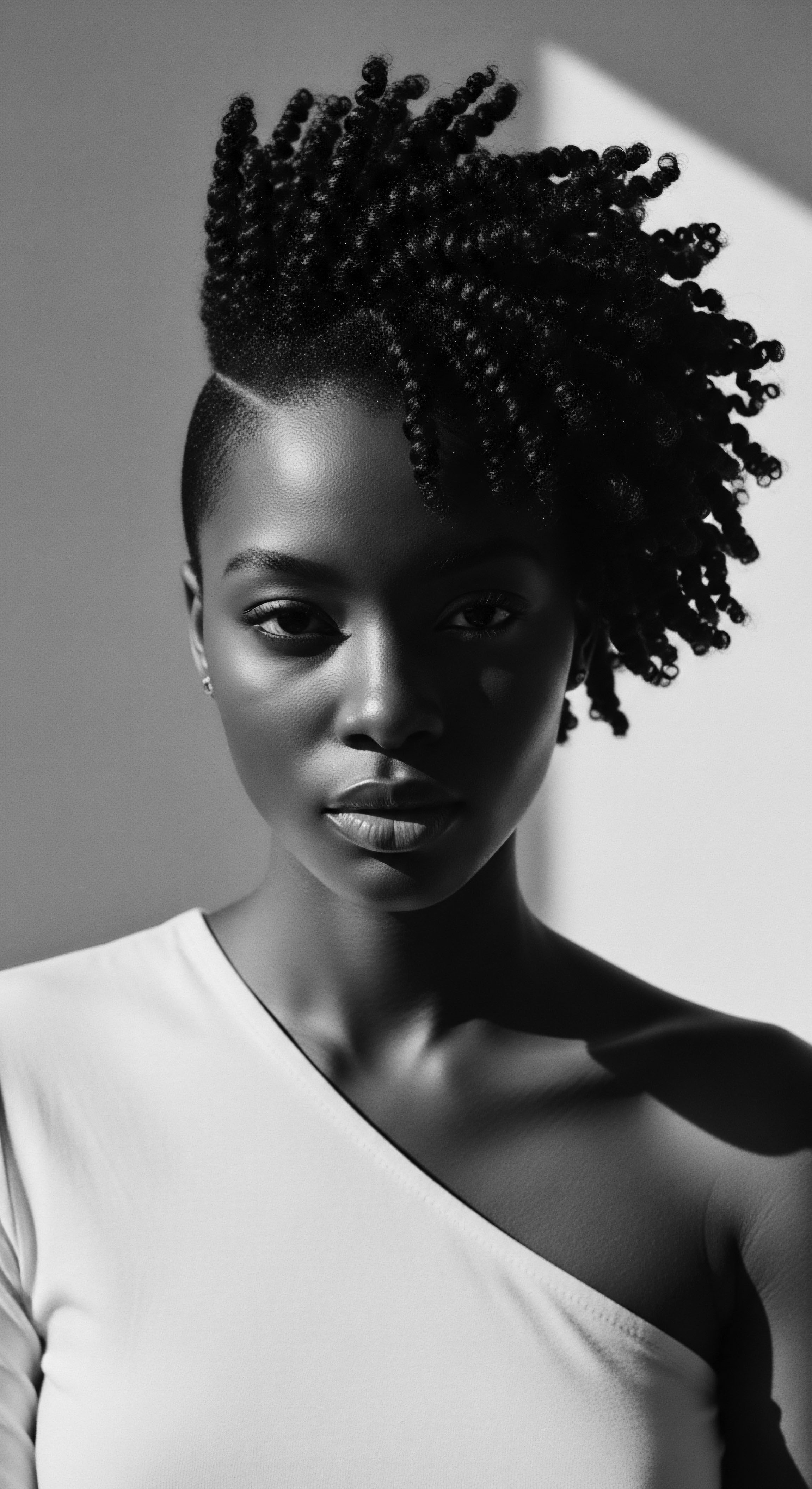
Fundamentals
The essence of Hair Porosity Management, when viewed through the profound lens of Roothea’s ‘living library,’ extends far beyond a mere scientific classification. It represents a deeply ingrained dialogue between our strands and the wisdom passed through generations, particularly within the rich tapestry of textured hair heritage. At its simplest, Hair Porosity describes the capacity of the hair shaft to absorb and retain moisture. This inherent characteristic is dictated by the structure of the hair’s outermost layer, the cuticle.
A healthy cuticle, resembling overlapping scales, determines how readily water, oils, and other nourishing elements can penetrate the strand and, crucially, how effectively they are held within. Understanding this fundamental interplay is not merely about product selection; it is about honoring the unique needs of our hair, a reverence often intuitively practiced by our ancestors.
For individuals with textured hair – a spectrum encompassing waves, curls, coils, and kinks – the concept of porosity takes on a heightened significance. The very architecture of these strands, often characterized by more complex twists and turns along the shaft, can present distinct challenges and opportunities regarding moisture balance. For centuries, before the advent of microscopes and molecular biology, communities with a rich heritage of textured hair developed sophisticated systems of care.
These ancestral methods, while not articulating the term “porosity,” were undeniably adept at managing its effects. They understood, through observation and inherited wisdom, which botanical extracts, natural emollients, and protective styles best served to hydrate, strengthen, and preserve the vitality of their hair.
Hair Porosity Management, for textured hair, is an intuitive dialogue between the strand’s inherent moisture capacity and ancestral wisdom.
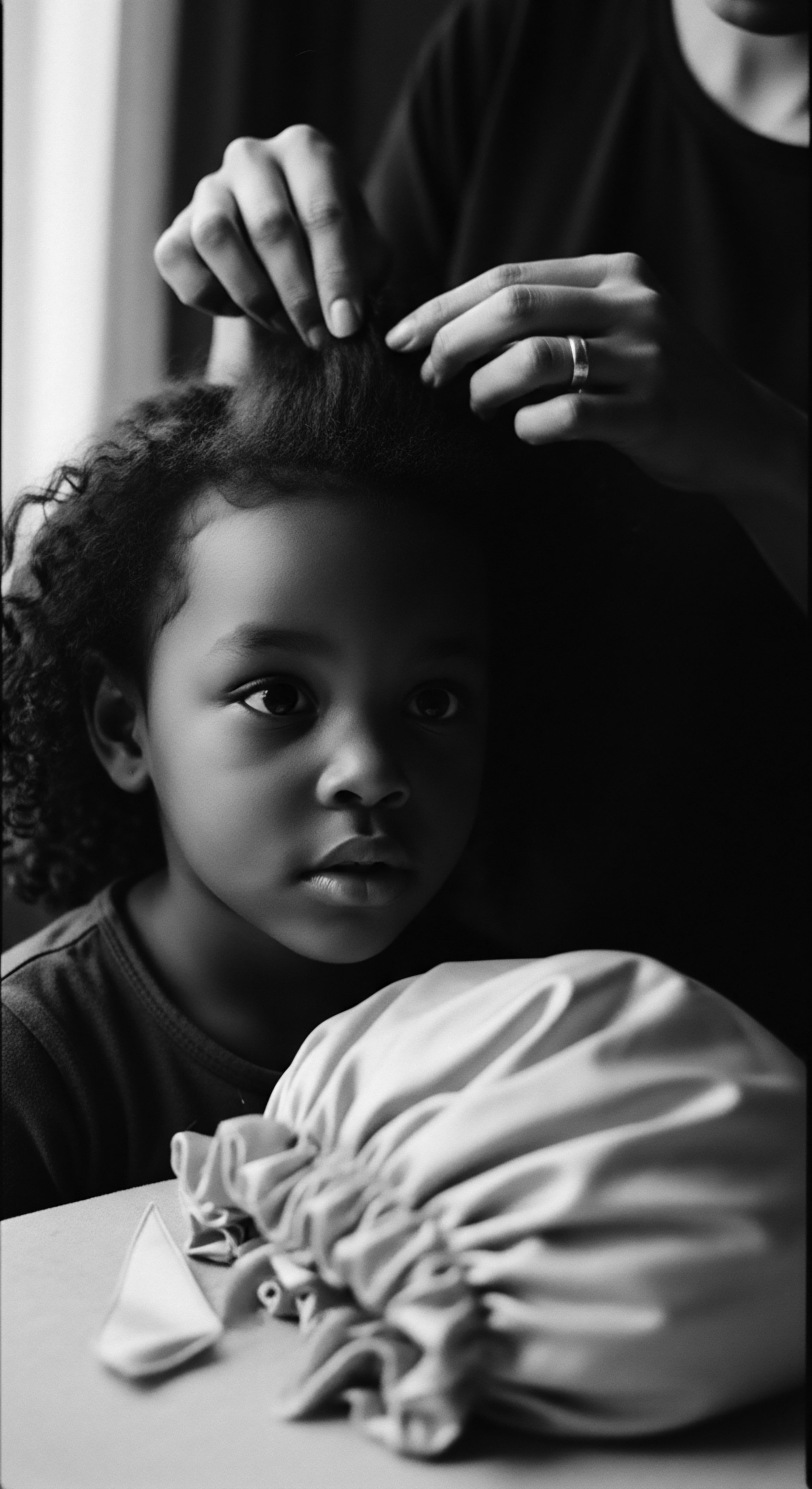
Echoes from the Source ❉ Ancestral Understanding of Moisture
The foundational understanding of hair porosity management finds its roots in the elemental practices of ancient civilizations. Across various African societies, hair was not simply an adornment; it served as a spiritual conduit, a marker of identity, status, and community. The care rituals associated with hair were therefore imbued with immense cultural weight.
Long before the scientific term “porosity” entered our lexicon, ancestral communities recognized that certain hair types craved deep hydration and protection, while others required a lighter touch. This recognition stemmed from direct, sensory engagement with the hair ❉ feeling its texture, observing its response to water and natural oils, and noting its resilience or fragility.
Consider the historical application of various plant-based butters and oils. In many West African traditions, the application of Shea Butter or Red Palm Oil was not arbitrary. These substances, known for their occlusive and emollient properties, were often worked into the hair to create a protective barrier. This practice, while perhaps seen as a simple conditioning ritual, was in effect a sophisticated method of managing what we now term High Porosity Hair – hair with a more open cuticle that readily absorbs moisture but also loses it swiftly.
By sealing the cuticle, these natural ingredients helped to retain the precious hydration absorbed from water or herbal rinses, thereby preventing dryness and breakage. Conversely, for hair that appeared to repel water or feel perpetually weighed down (what we might now call Low Porosity Hair), lighter, more penetrating oils or humectant-rich plants might have been favored, often combined with gentle cleansing methods to avoid buildup.
- Baobab Oil ❉ Revered across many African cultures, this oil, extracted from the majestic ‘Tree of Life,’ was prized for its moisturizing and softening qualities, often applied to hair to impart suppleness and protect against harsh climates.
- Aloe Vera ❉ Utilized in various traditional healing and beauty practices across the continent, its gel-like consistency offered hydration and soothing properties, often used as a conditioning agent.
- Chebe Powder ❉ A traditional Chadian mixture, applied to hair to promote length retention and strength, demonstrating an ancestral practice focused on preserving hair integrity and moisture.
The practices were not rigid formulas but living traditions, adapting to environmental conditions, seasonal changes, and individual hair responses. This fluid, observant approach to hair care represents the earliest form of porosity management – a testament to humanity’s innate capacity for understanding and nurturing the natural world, including the strands that crown our heads.
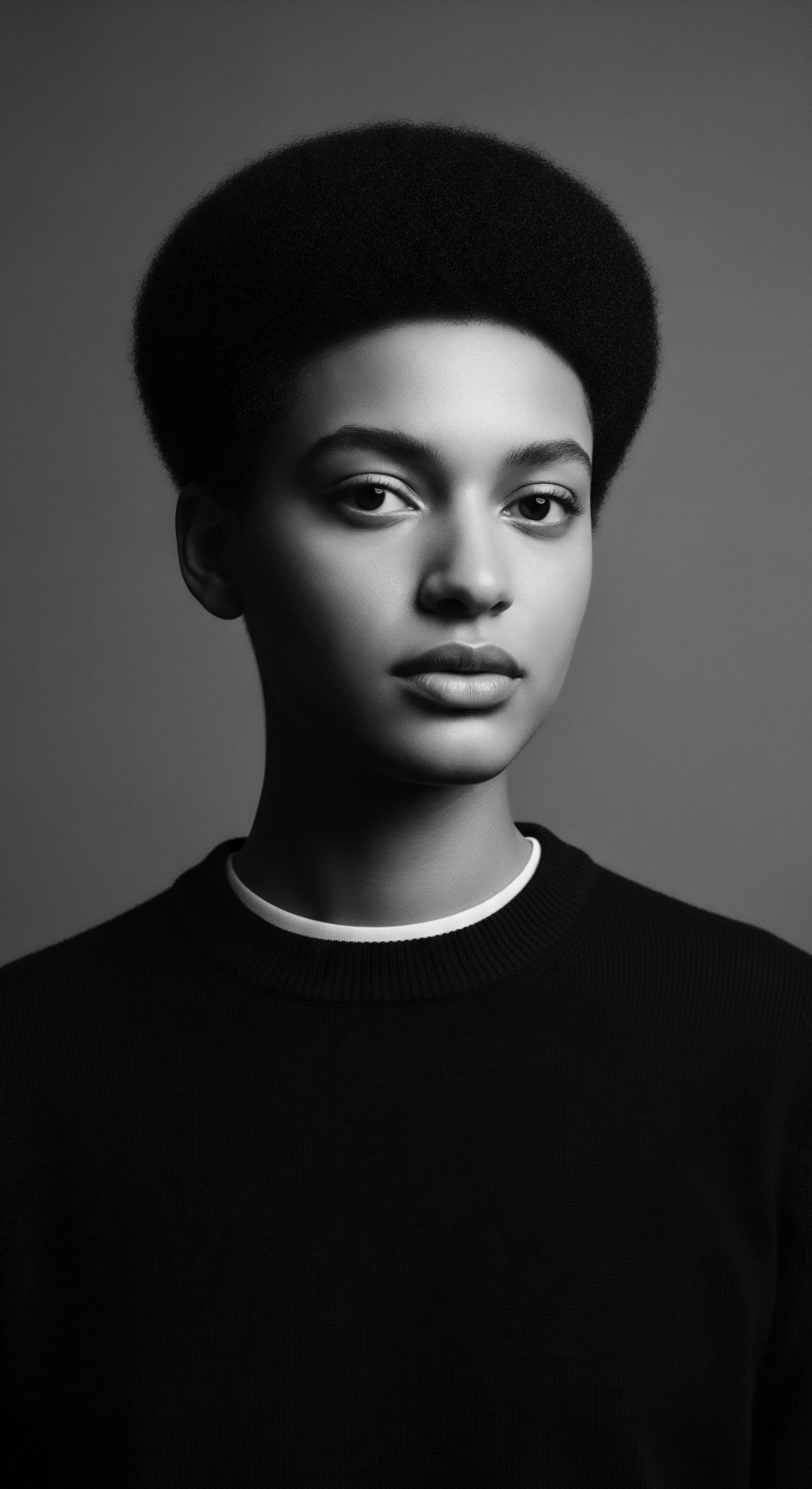
Intermediate
Stepping beyond the elemental, an intermediate exploration of Hair Porosity Management reveals the intricate interplay between biological structure and culturally informed care. The cuticle, that outermost layer of the hair shaft, serves as the primary determinant of porosity. When its scales lie flat and tight, moisture finds it challenging to enter, characterizing Low Porosity Hair. Conversely, when these scales are lifted or damaged, moisture enters with ease but departs just as swiftly, defining High Porosity Hair.
The fortunate balance between these extremes marks Normal Porosity Hair, where moisture absorption and retention exist in a harmonious equilibrium. For textured hair, the very coiling and twisting of the strand can contribute to natural lifts in the cuticle, making it inherently more susceptible to the characteristics of high porosity, or creating challenges for even moisture distribution.
The genius of ancestral hair practices, passed down through oral traditions and communal rituals, often bypassed the need for scientific terminology while intuitively addressing these structural realities. Traditional hair care was not merely about superficial aesthetics; it was a holistic engagement with the hair’s needs, often recognizing its response to environmental factors, dietary influences, and the specific properties of natural ingredients. This collective wisdom understood that a particular blend of herbs or a specific method of applying oil yielded different results for different hair types, effectively managing what we now categorize as porosity variations.

The Tender Thread ❉ Living Traditions of Care and Community
The practices of hair porosity management are deeply woven into the communal fabric of textured hair heritage. Consider the historical emphasis on protective styling across various African and diasporic communities. Braids, twists, and locs were not merely decorative; they served a crucial function in safeguarding the hair from environmental aggressors, minimizing manipulation, and preserving moisture.
These styles, often intricately crafted during communal gatherings, allowed for the consistent application of nourishing oils and butters, providing a sustained protective layer that was particularly beneficial for hair types prone to moisture loss (high porosity) or those requiring gentle, consistent hydration (low porosity). The act of braiding or twisting itself could also help to distribute natural oils down the hair shaft, addressing the challenges posed by the unique structure of coiled strands.
Ancestral hair practices, without scientific labels, intuitively addressed hair porosity through protective styling and communal care.
The selection of ingredients, too, reflected a nuanced understanding. For instance, in many traditional settings, a warm water rinse or steam treatment might precede the application of heavier butters for hair that seemed resistant to moisture. This intuitive “opening” of the cuticle, now scientifically understood as a response to heat, facilitated deeper penetration for low porosity hair.
Conversely, lighter, water-based infusions might be used for hair that felt overly soft or fragile, avoiding the saturation that could lead to hygral fatigue in high porosity strands. These were not isolated techniques but components of comprehensive care systems, often passed from elder to youth, embodying generations of experiential knowledge.
| Traditional Practice Warm water rinses or herbal infusions before oiling |
| Implicit Porosity Management Facilitates moisture absorption for low porosity hair by gently lifting the cuticle. |
| Cultural Context Common in many West African traditions, often utilizing steeped herbs like hibiscus or fenugreek. |
| Traditional Practice Consistent application of heavy butters (e.g. Shea, Cocoa) |
| Implicit Porosity Management Seals moisture into the hair shaft, beneficial for high porosity hair prone to rapid water loss. |
| Cultural Context Prevalent across the African continent, particularly in communities where these natural resources were abundant. |
| Traditional Practice Protective styling (braids, twists, locs) |
| Implicit Porosity Management Minimizes exposure to elements and reduces manipulation, aiding moisture retention for all porosity types, especially high porosity. |
| Cultural Context Deeply embedded in various African and diasporic cultures, signifying status, identity, and resilience. |
| Traditional Practice Clay washes (e.g. Rhassoul clay) |
| Implicit Porosity Management Gently cleanses without stripping, maintaining moisture balance for normal to low porosity hair. |
| Cultural Context Historically used in North African and Middle Eastern traditions for both hair and skin purification. |
| Traditional Practice These practices underscore a timeless wisdom, demonstrating that hair's inherent needs were met through observation and inherited methods. |
The collective understanding of hair’s responsiveness to its environment and the care it received created a profound system of maintenance. This system was not codified in textbooks but lived within the hands of mothers, grandmothers, and community elders, a continuous flow of knowledge ensuring the vitality of hair, a precious aspect of individual and collective identity. The significance of Hair Porosity Management, at this intermediate level, is its ability to bridge the gap between ancient intuitive practices and contemporary scientific validation, honoring the enduring efficacy of heritage.
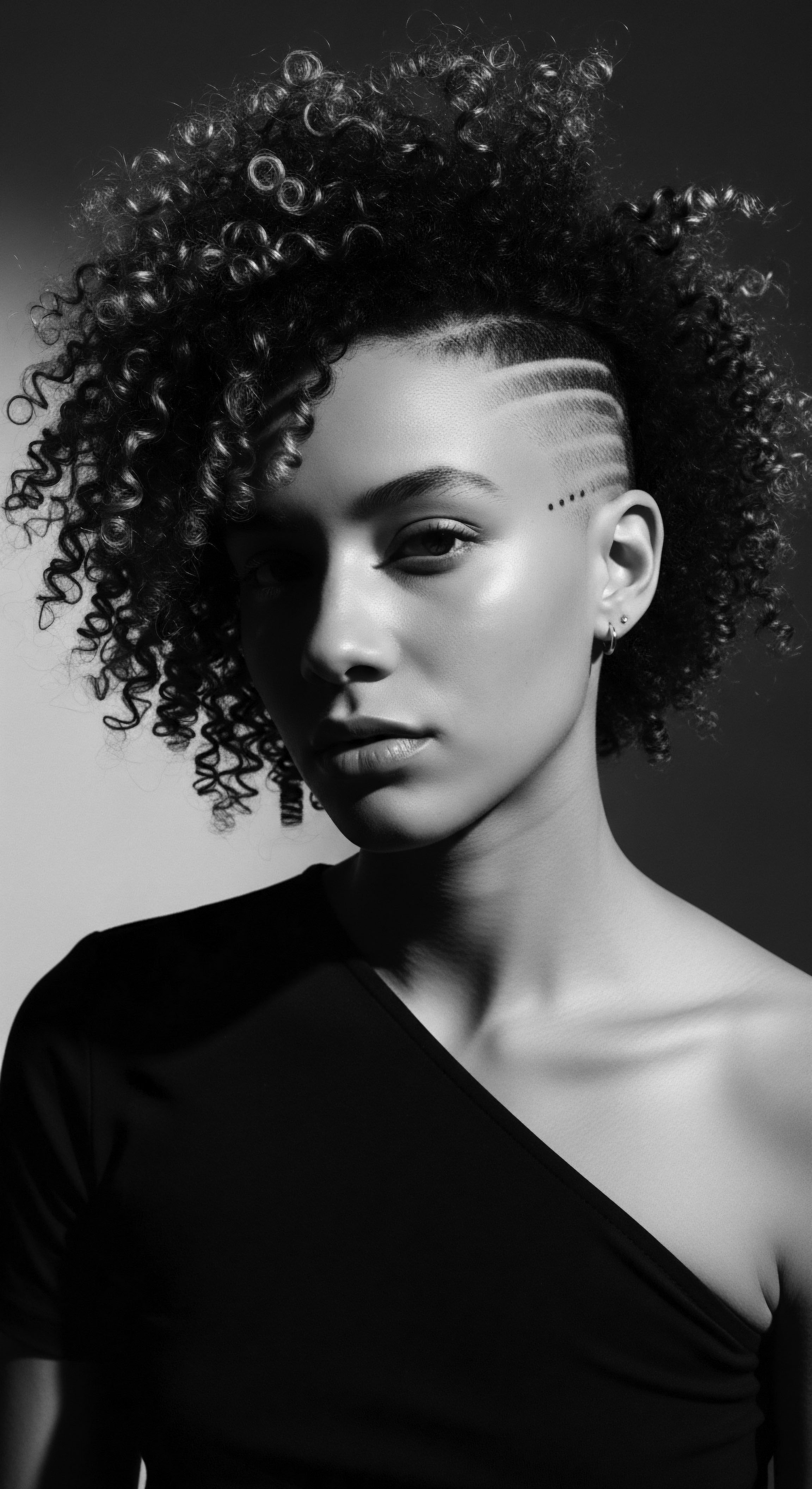
Academic
The academic definition of Hair Porosity Management extends beyond a mere explanation of cuticle behavior; it constitutes a multidisciplinary inquiry into the biophysical properties of the hair fiber, its dynamic interaction with environmental factors and cosmetic formulations, and its profound cultural and historical implications, particularly within the context of textured hair. This concept, at its most rigorous, delineates the hair shaft’s capacity for water absorption and retention, a characteristic primarily governed by the morphology and integrity of the cuticle layer. A Delineation of porosity reveals three primary classifications ❉ low, normal, and high, each possessing distinct physiological responses to moisture and product application.
The precise Specification of a hair strand’s porosity informs a strategic approach to care, aiming to optimize hydration, minimize damage, and maintain structural integrity. This scientific understanding, however, gains profound Significance when viewed through the lens of human experience, especially for individuals of African descent and those with mixed heritage, whose hair types frequently exhibit a wider spectrum of porosity variations due to their unique helical structures and curl patterns.
The Elucidation of Hair Porosity Management, therefore, requires a comprehensive analytical framework that synthesizes dermatology, cosmetic chemistry, and cultural anthropology. From a dermatological perspective, understanding porosity aids in diagnosing conditions related to hair dryness, brittleness, or product buildup, which can often be misattributed without considering the cuticle’s state. In cosmetic chemistry, the formulation of products—from humectant-rich conditioners for low porosity to occlusive sealants for high porosity—is directly informed by these principles, seeking to create optimal delivery systems for nourishing compounds. Yet, it is through the anthropological and historical examination that the true Meaning of Hair Porosity Management unfolds, revealing how communities have, for millennia, engaged in practices that implicitly addressed these biophysical realities, often without the benefit of modern scientific nomenclature.
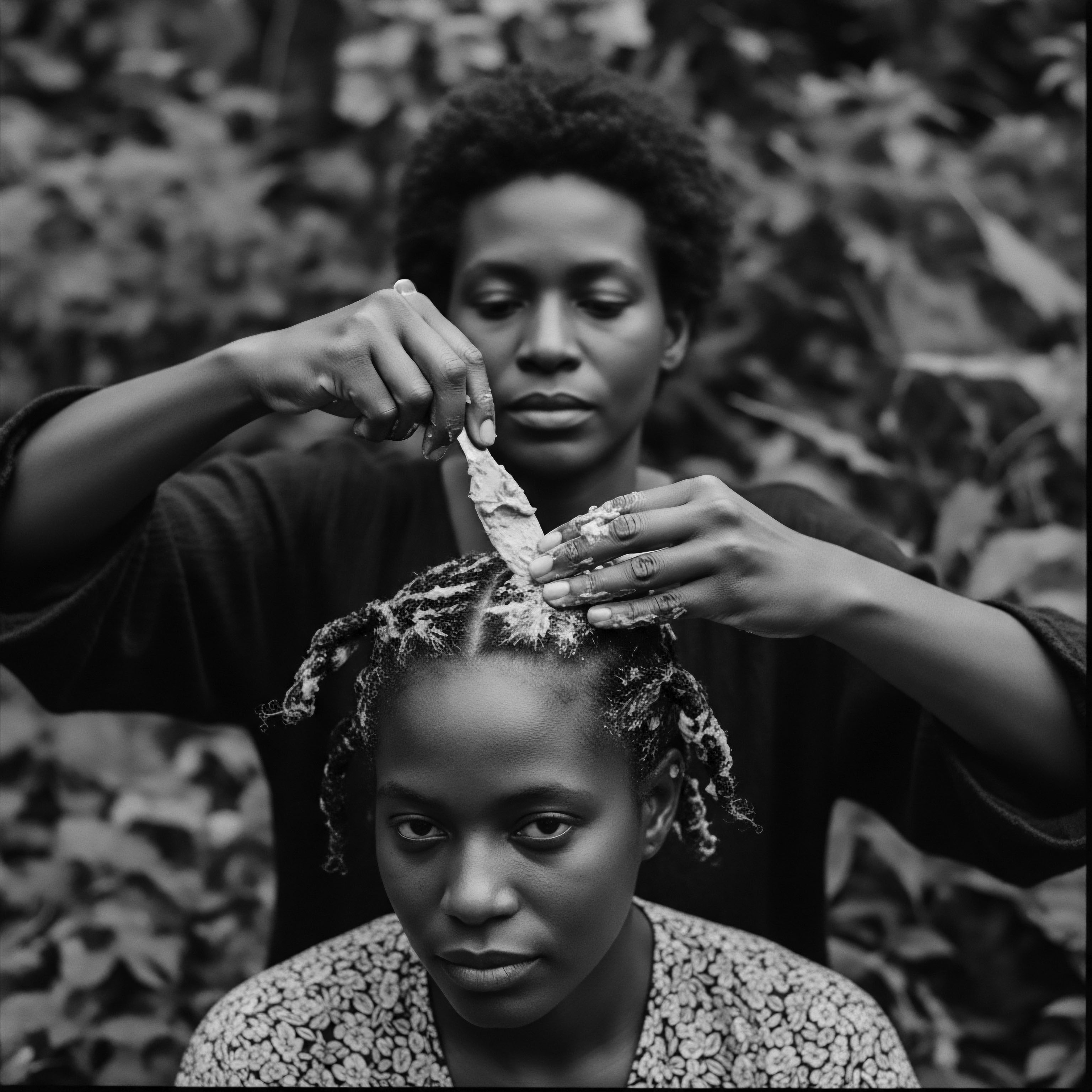
The Unbound Helix ❉ Voicing Identity and Shaping Futures
The ancestral wisdom surrounding hair care, often passed down through matriarchal lines, provides a compelling testament to intuitive porosity management. Consider the pervasive and enduring use of Shea Butter (Vitellaria Paradoxa) across West African communities, particularly its deep cultural roots among the Dagomba Women of Ghana. For generations, the arduous, communal process of harvesting shea nuts and transforming them into butter has been a central pillar of economic empowerment and cultural continuity.
This rich, emollient substance, applied liberally to hair and skin, represents a sophisticated, experiential approach to managing hair health that predates modern scientific understanding of porosity. Its widespread application, often during intricate styling sessions, was not merely cosmetic; it was a deliberate act of protection and preservation.
Academic inquiry into ethnobotanical practices reveals that the traditional use of shea butter directly correlates with the needs of hair types often categorized as high porosity. High porosity hair, with its raised or compromised cuticles, readily absorbs water but struggles to retain it, leading to chronic dryness and increased susceptibility to breakage. The dense, lipid-rich composition of shea butter acts as an effective occlusive agent, forming a protective film on the hair shaft.
This film minimizes transepidermal water loss from the hair, effectively “sealing” in moisture and preventing dehydration. The consistency of this practice, observed across countless generations, speaks to an inherited understanding of hair’s response to environmental stressors and the restorative power of natural emollients.
Shea butter’s ancestral application for textured hair demonstrates an intuitive, time-honored mastery of porosity management.
A specific historical example illustrating this deep connection can be found in the work of researchers like Akosua Adomako Ampofo, whose studies on gender and development in Ghana often touch upon the cultural significance of traditional resources. While not directly quantifying porosity, ethnographic accounts consistently highlight the role of shea butter in maintaining hair’s health and vitality in climates where sun and dust can severely dehydrate exposed strands. The daily or weekly application of shea butter, often warmed and massaged into the hair, provided a consistent barrier against moisture evaporation, a practice that, in contemporary terms, directly addresses the core challenge of high porosity hair ❉ moisture retention. This was not a scientific theory but a lived reality, a pragmatic solution to a persistent challenge.
Furthermore, the intergenerational transmission of this knowledge underscores its academic Significance. The skills involved in shea butter production and its application are taught from mother to daughter, reinforcing community bonds and preserving ancestral wisdom. This oral tradition, often accompanied by storytelling and song, ensures that the understanding of how to care for textured hair—including implicit porosity management—is embedded within the cultural identity itself.
The success of these practices, evidenced by the enduring health and stylistic versatility of textured hair throughout history, provides compelling empirical data for the efficacy of ancestral methods. This continuous lineage of care stands in stark contrast to the often-disruptive influence of colonial beauty standards, which frequently dismissed traditional practices in favor of alienating, often damaging, alternatives.
The long-term consequences of neglecting porosity management, particularly for textured hair, extend beyond mere cosmetic concerns. Chronic dryness and breakage can lead to diminished hair density, scalp irritation, and even a psychological disassociation from one’s natural hair. Conversely, the successful integration of porosity management principles, whether through ancestral practices or modern scientific understanding, contributes to improved hair health, enhanced self-perception, and a deeper connection to one’s heritage. The success insights derived from historical examples, such as the consistent use of shea butter, underscore the enduring value of holistic, intuitive approaches to hair care.
These insights suggest that true hair wellness is not solely dependent on advanced chemical formulations but also on a respectful dialogue with the hair’s inherent structure and a profound appreciation for time-tested methods. The academic Delineation of Hair Porosity Management, therefore, serves as a bridge, validating ancestral wisdom with contemporary scientific rigor, thereby offering a more complete and culturally sensitive understanding of hair care.
- Traditional Oiling Practices ❉ The systematic application of natural oils and butters, often warmed, created a protective layer that sealed moisture into the hair shaft, a practical solution for hair prone to rapid moisture loss.
- Herbal Rinses and Infusions ❉ The use of specific plant extracts, like hibiscus or amla, in water-based rinses provided natural humectants and mild acids, which could either help to gently lift cuticles for deeper conditioning or smooth them for shine and protection.
- Protective Styling ❉ Braiding, twisting, and other tension-based styles served as physical barriers against environmental damage, reducing the need for frequent manipulation and thus preserving the integrity of the hair’s delicate cuticle.
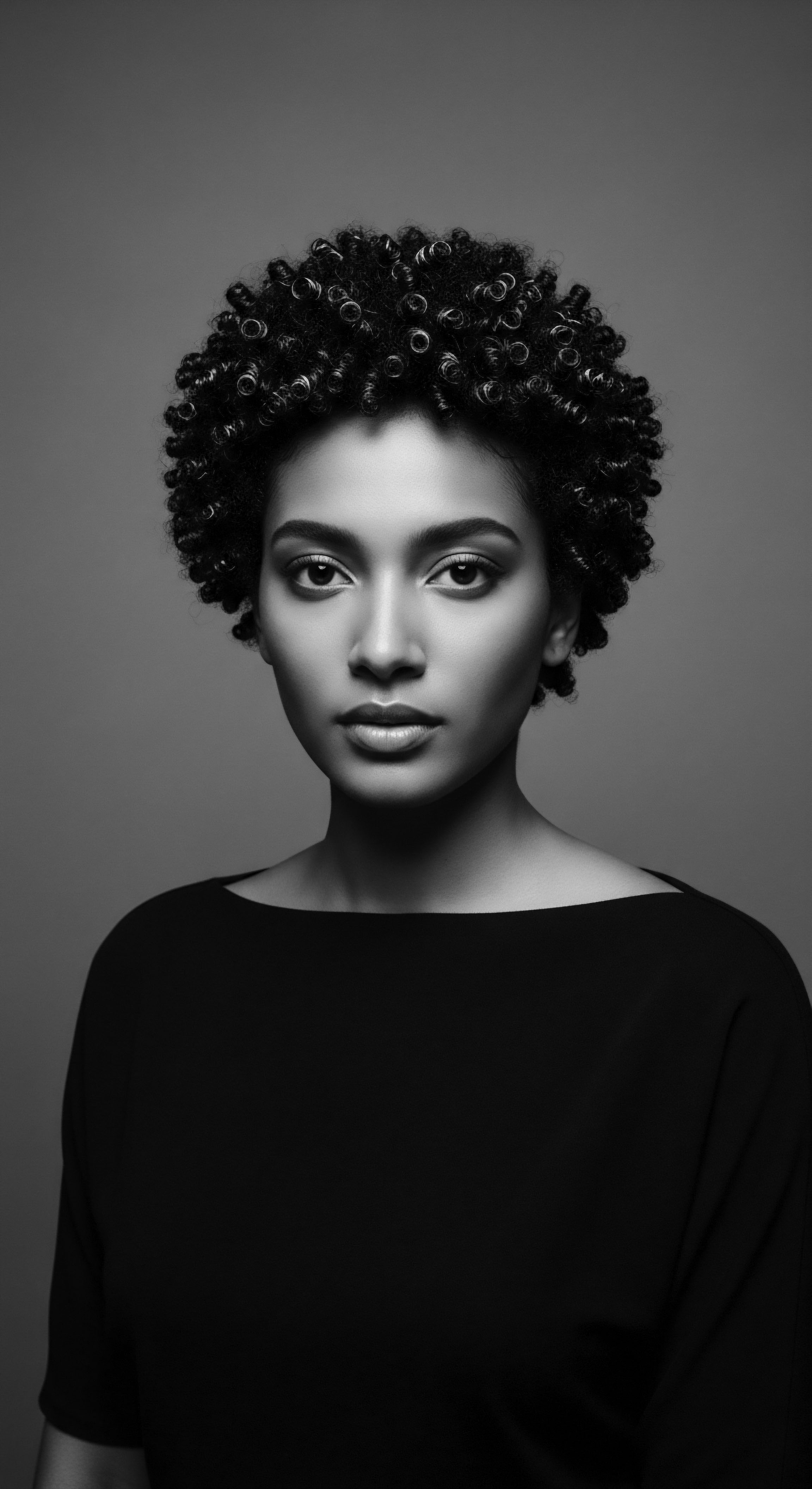
Reflection on the Heritage of Hair Porosity Management
As we draw this meditation on Hair Porosity Management to a close, the resonant echoes of ancestral wisdom continue to reverberate, reminding us that the journey of our strands is inextricably linked to the stories of those who came before us. The concept of porosity, once a scientific abstraction, transforms into a living testament to human ingenuity and observation, particularly within the diverse and resilient communities of textured hair. It is a profound realization that the careful application of plant-derived butters, the intricate crafting of protective styles, and the intuitive selection of cleansing agents were, in essence, sophisticated acts of porosity management, long before the term itself was conceived.
The ‘Soul of a Strand’ ethos, which guides Roothea’s ‘living library,’ finds its deepest expression in this understanding. Each coil, curl, and kink carries within it not only its unique porosity signature but also the genetic memory of resilience, adaptation, and beauty. The hair, in this context, is not merely a biological structure; it is a profound repository of heritage, a visible link to ancestral practices and enduring cultural narratives. Managing its porosity, therefore, becomes an act of honoring this lineage, a conscious choice to engage with our hair not as a problem to be solved, but as a sacred extension of self, deserving of informed and respectful care.
The evolving significance of Hair Porosity Management lies in its capacity to bridge worlds ❉ the world of empirical science and the world of embodied, generational knowledge. It allows us to appreciate how modern research often validates the efficacy of traditional methods, providing a deeper understanding of ‘why’ certain practices worked so well for our forebears. This convergence empowers us to forge a future of hair care that is both scientifically grounded and deeply rooted in cultural reverence. It is a call to recognize the intrinsic value of textured hair, to understand its unique needs, and to celebrate its journey through history, knowing that every strand tells a story of survival, creativity, and identity.

References
- Ampofo, A. A. (2001). The dynamics of female entrepreneurship and the challenges of poverty reduction in Ghana ❉ The case of women in shea butter production. Centre for Gender Studies and Advocacy, University of Ghana.
- Blyden, N. (2000). African Americans and the culture of hair. University of Pennsylvania Press.
- Chimuka, L. & Ngomana, C. (2018). Traditional African hair care practices ❉ A review of ethnobotanical studies. Journal of Ethnopharmacology, 218, 120-130.
- Roberson, S. (2010). Hair story ❉ Untangling the roots of Black hair in America. St. Martin’s Press.
- Schueller, R. & Romanowski, P. (2017). Conditioning agents for hair and skin. CRC Press.
- Wilder, C. (2000). African-American hair and its cultural context. In K. L. Hunter & M. L. T. Hunter (Eds.), African American hair care ❉ The art and science of natural and textured hair (pp. 1-18). Milady.
